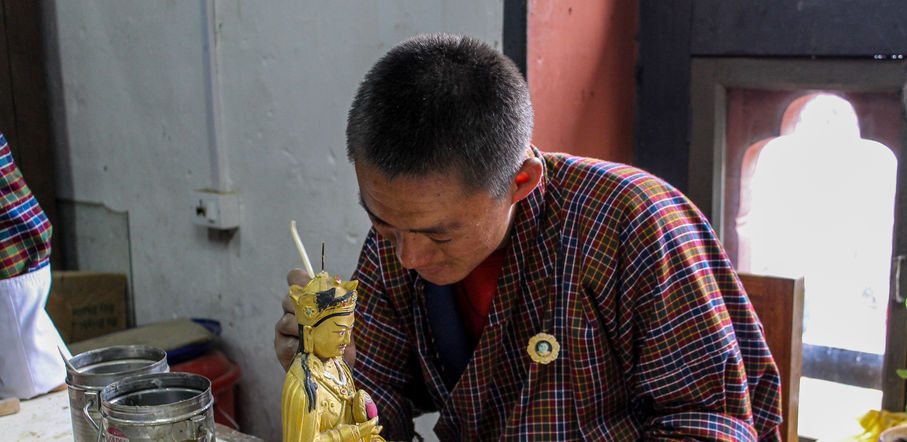Cultural commitments of Bhutan
The National Institute of Zorig Chusum in Thimphu is a haven and a warm interactive space in Thimphu. It comes alive because of the students who learn many traditional arts like mask making, embroidery, sculpture making, painting and wood carving. The painting school’s presence is instrumental in spreading the genes of craft to the next generation of Bhutanese youth.
Set up by the government in 1971, Zorig Chusum translates to thirteen crafts. The crafts are unique doorways of understanding the religious and cultural roots of the land. The numerous patterns, designs and colours are the messengers of the rich heritage. Creativity is nurtured while sharpening the perspective of the students. The sculptures spark a distinction of Bhutan’s extraordinary identity as a kingdom of peace and harmony. These handicrafts adorn houses, dzongs (administrative centre) and monasteries as a mark of appreciation and pride of belonging to the same origins.
Although landlocked by India, Nepal and Tibet, Bhutan has paved a way for itself concerning its unmistakable collective awareness and the cultural commitments to keep its art forms alive. The many craft centres and schools act as sanctuaries in achieving this feat.









